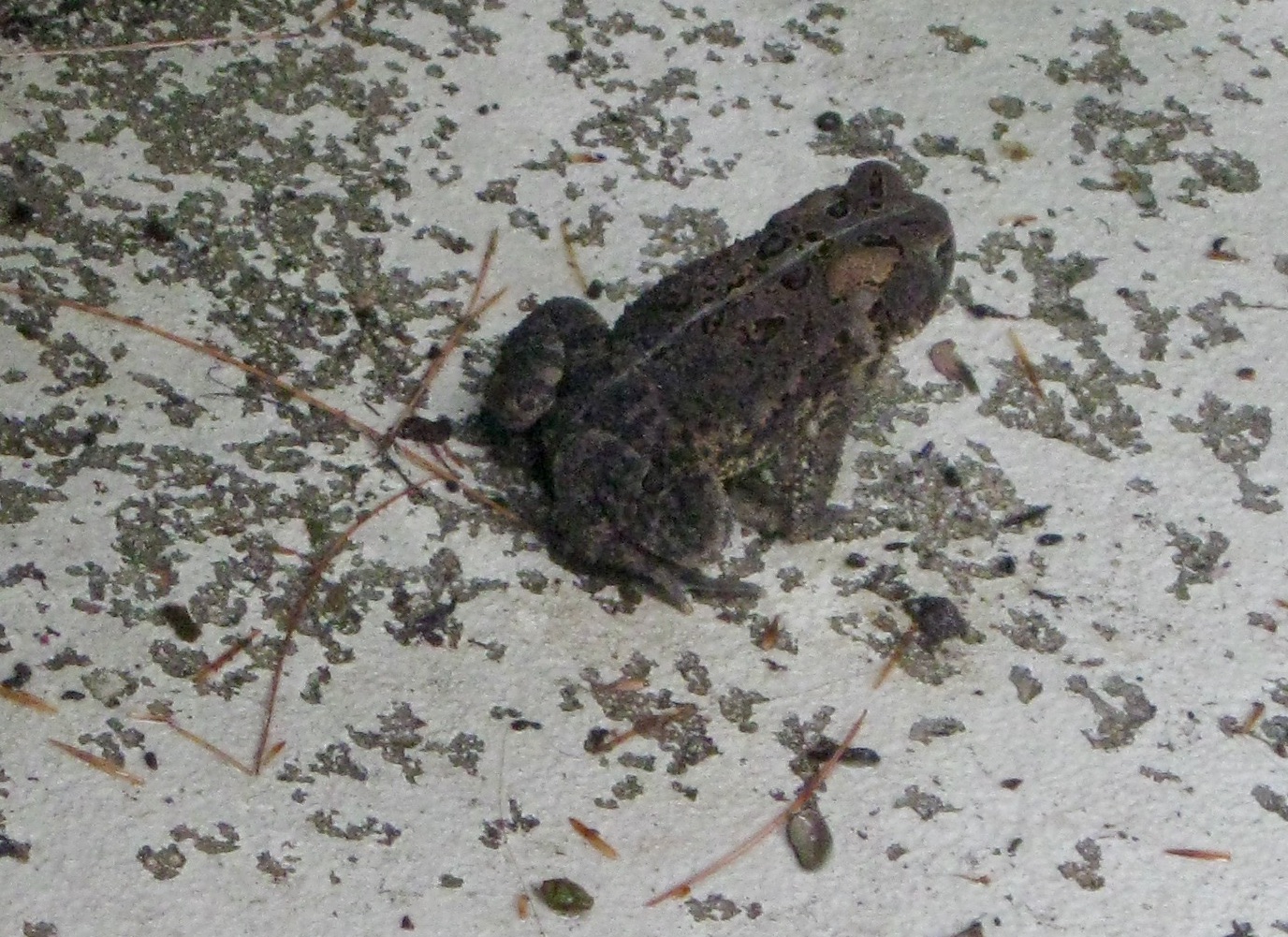I’ve seen possums (or Opossum) before; we have them in Washington, though we keep them away from horses and equine food because of concerns about Equine Protozoal Myeloencephaliti (EPM) caused by the protozoa Sarcocystis neurona, commonly carried by possums. But I’ve never seen a possum carrying her babies on her back.
Until today.

She sauntered across the patio, then down the side of the building before cutting across the lawn and under the split-rail fence towards the woods.
Possums (technically the Virginia opossum, or Didelphis virginiana is North America’s only marsupial. When the babies are born (via a temporary secondary birth canal and vagina), they claw their sightless way to mom’s pouch and remain there for until emerging with open eyes, thereupon they cling to mom’s back as she roams, eventually descending to make their own way.
Opossums were named by Captain John Smith who coined the name from opassum, an Algonquian word that means “white animal.” Smith writing in Virginia in 1608 describes Opussums thus:
An Opassom hath an head like a Swine, and a taile like a Rat, and is of the bignes of a Cat. Under her belly she hath a bagge, wherein shee lodgeth, carrieth, and sucketh her young.
Maine is not the best territory for possums; they do not hibernate, and winter can be very cruel. As their native habit has been denuded and developed, they’ve been moving north, and as climate change progresses they’ve moved more rapidly. They were deliberately introduced to the West coast of the U.S. in the early 1900s, and have moved from coastal California to Washington, and up into British Columbia.
I kinda like possums. They have opposable thumbs on their feet, which makes them great at climbing. Their tails are prehensile. They have an amazing immune systems, so are generally not bothered by, for instance, snake venom. They’re rarely rabid, and they are very efficient tick predators, which is particularly good news for Maine. This poor mom has had her hair pulled out by her babies as they clamber on and around her, but when less stressed, she has thick hair that’s strikingly white around her face.











